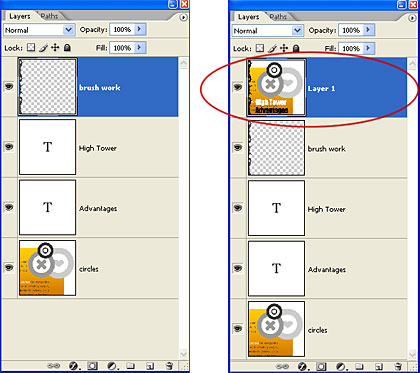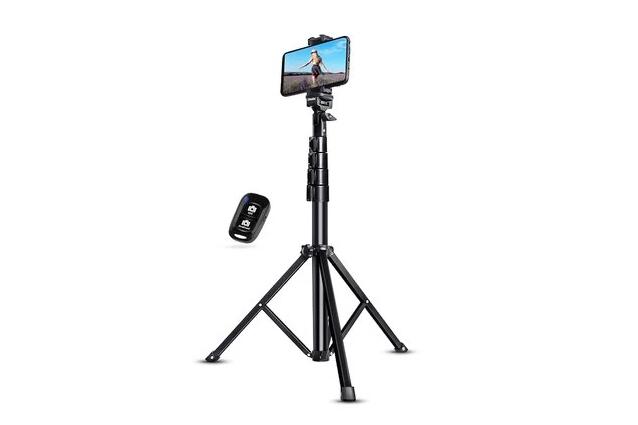10 Photoshop Tips You Need to Know
10 Photoshop Tips You Need to Know

Photoshop is such a powerful program. But along with that power comes some complexity, and that really holds true when you find out all of the little tips and tricks we have available in such a big program. In today’s video, I’m sharing 10 Photoshop Tips and Tricks that I use all of the time, and I hope you find they make your photo editing life just a little bit easier. Enjoy!
120 Photoshop tips, tricks and fixes
Photoshop is an easy tool to use and a difficult one to master. Fortunately, help is at hand with our comprehensive list of tips, tricks and fixes for Adobe's showpiece software.

Whether you're looking for tips on using layers, advice on mastering the pen tool, a guide to using RAW, or ways to improve your brush work, it's all here.
Most of these tips were originally published in Practical Photoshop magazine – now part of Digital Camera World . If you're a photographer, we recommend making DCW a rest stop on your travels around the web.
Here are the best Photoshop tips, whether you're using an older CS version or the very latest Creative Cloud software. We've grouped them by category to make it easier for you to find the stuff that's the most relevant to your work right now, but be sure to check them all!
5 best laptops for Photoshop (opens in new tab)
Let's get started…
Quick Photoshop tips
01. Easier marquee selections
Hold down Alt to start a selection at the centre point with any Marquee tool, and then hold Space to temporarily move the selection around.
02. Undo, undo, undo
You probably know that Cmd/Ctrl+Z is Undo, but you may not know Cmd/Ctrl+Alt+Z lets you undo more than one history state.
03. 1000 history states
Go to Edit>Preferences>Performance to change the number of History states up to a maximum of 1000. Beware though of the effect that this has on performance.
04. Cycle blend modes
Shift + or – will cycle through different layer Blend Modes, so long as you don't have a tool that uses Blend Mode options settings.
05. Rotating patterns
Photoshop tips: Rotating Patterns
You can make amazing kaleidoscopic patterns with the help of a keyboard shortcut. Cmd/Ctrl+Shift+Alt+T lets you duplicate a layer and repeat a transformation in one go. To demonstrate, we've made a narrow glowing shape by squeezing a lens flare effect, but you can use any shape, image or effect you like. First, make an initial rotation by pressing Cmd/Ctrl+T and turning slightly, then hit Enter to apply. Next, press Cmd/Ctrl+Shift+Alt+T repeatedly to create a pattern.
06. Combine images with text
Photoshop tips: Combining images with text
There's a really easy way to overlay an image on top of text. Drop an image layer over a type layer then hold down Alt and click the line between the two layers in the Layers Panel to clip the image to the text.
07. Bird's eye view
When zoomed in close, hold down H and drag in the image to instantly dart out to full screen then jump back to another area. One of the best Photoshop tips for viewing work!
08. Funky backgrounds
Photoshop tips: Funky backgrounds
Want to change the default grey background to something more funky? Shift–click over the background area with the Paint Bucket tool to fill it with your foreground colour. Right-click it to go back to grey.
09. Close all images
To close all of your documents at the same time, Shift-click any image window's close icon.
10. Spring-loaded move
While using any tool, hold Cmd/Ctrl to temporarily switch to the Move tool. Release to go back to your original tool. Note that spring-loaded keyboard shortcuts work for other tool shortcuts, too.
11. Interactive zoom
For interactive zooming, hold Cmd/Ctrl+Space then drag right to zoom in, or left to zoom out. The zoom targets where your mouse icon is, so it's one of the quickest ways to navigate around an image.
12. Diffuse effects
Photoshop tips: Diffuse effects
The Diffuse Glow filter can give highlights a soft ethereal feel, especially when you combine the effect with desaturation. Hit D to reset colours then go to Filter>Distort> Diffuse Glow. Keep the effect fairly subtle, then go to Image>Adjustments>Hue/ Saturation and drop the saturation down to complete the dreamlike effect.
13. Step by step: select sky with channels
A: Copy Blue Channel
Photoshop tips: Copy Blue channel
Go to Window Channel then drag the Blue Channel to the New Channel icon to duplicate it. Hit Cmd/Ctrl+L to access Levels, then drag the white and black point sliders in dramatically to make the sky totally white and the land black. Now use the Brush tool and paint with black to tidy any bits in the land.
B: Load a selection
Photoshop tips: Load a selection
Hold Cmd/Ctrl and click the Blue Copy Channel to load a selection of the white areas. Click back on the RGB Channel then go to the Layers Panel and add a Curves Adjustment Layer. The selection is automatically turned into a mask. Drag down on the curve to darken the sky.
Next page: Essential Photoshop shortcuts
10 Photoshop CC Tricks for Beginners
With Photoshop Creative Cloud, Adobe has once again lessened the gap between pro and amateur digital editors. Shortcuts are enhanced, new tools combine the functions of old ones, and the overall layout is strongly integrated into the rest of Adobe’s suite. In this 46-minute video, they’ve enlisted tech blogger Terry White to give a comprehensive guide to help Photoshop beginners perform 10 of his most-requested digital enhancements:
The video is very comprehensive and easy to follow. White recommends users buy a Wacom tablet or stylus for a touchscreen monitor if they’re thinking seriously about digital editing–not just because it’s easier for precise editing, but because you can apply different levels of pressure for more sensitivity, which you can’t do with a simple point-and-click mouse.
Most of his tutorial is useful not just for Photoshop CC users, but also users with older versions of Photoshop, too, although some of his tools and shortcuts won’t apply.
Basic Photoshop Tricks for Beginners
Remove blemishes. Using the spot healing brush tool, you can blend the pixels surrounding imperfections into the imperfection itself, smoothing out discolouration like pimples and moles. Make layers. Rather than working on the background image, create layers to add filters and text on top of the image itself, so that you can reverse them if necessary. Create masks. Layer masks mean you can adjust images indirectly using the paintbrush tool in black or white to colour correct, brighten up or add contrast to any specific area of the photo. Crop your image. Photoshop CC introduces a new smoothness to cropping, wherein it’s easier for users to toggle between the automatic “original ratio” setting (which prevents distortion) and the various ratios underneath, like 1:1, 4:6, etc. Use the camera raw filter for exposure and coloring. Find the eye-drop tool to spot a natural color that’s around 18 percent grey, black, or white. This will automatically correct the rest of the image. You can then adjust the contrast, saturation and brightness individually until it looks right. Remove objects from images. Use the lasso or the quick selection brush tool to draw a rough outline around the object you want to remove. Once it’s selected, hit “delete” to use a content-aware fill. (If hitting delete doesn’t work, go to Edit > Fill > Content-Aware.) Move objects. Use Photoshop CC’s new tool called “content aware move” that combines both movement and content-aware fill in one stroke. You can also lift an image from the background into a new layer, and transform it to create a realistic duplicate. Put people on new backgrounds. Drag and resize your foreground image onto the new background image window in Photoshop. Use the quick select tool and hit “refine edge” to test your cutout. If it looks choppy, you can smooth it out with the “smart radius” option. Add text to your image. This is very similar to past Photoshop versions, in that you simply hit the text tool and type away. Photoshop CC has cloud cooperation with font warehouse Typekit whereby you can instantly browse and download any among thousands of specialty fonts. Save your file in different formats. Save in .psd to keep all your editable data, while the next most-common format is a low-size .jpg via “Save For Web,” which compresses your image to optimize loading times online.
None of these tutorials are very difficult, and they range from beginner to intermediate–meaning even if you know how to save a file for web, you may not know how to create a realistic shadow for an object on a new background. So even just a skim through the 46-minute video might produce some insight.







